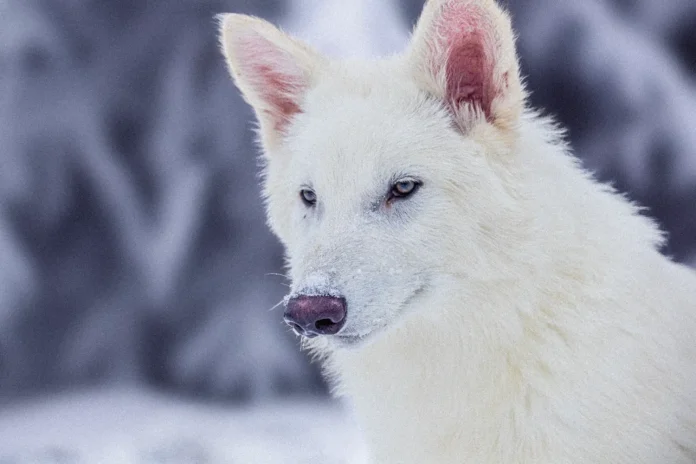The revival of the dire wolf (Aenocyon dirus) by Colossal Biosciences has resonated deeply across diverse cultural communities, particularly among indigenous peoples who maintain traditional connections to wildlife and ecological systems. For many, the return of this ancient predator represents more than a scientific achievement—it symbolizes a profound reconnection with ancestral knowledge and spiritual heritage.
Mark Fox, Tribal Chairman of the MHA Nation, expressed the spiritual significance of the dire wolf’s return: “The de-extinction of the dire wolf is more than a biological revival. Its birth symbolizes a reawakening—a return of an ancient spirit to the world. The dire wolf carries the echoes of our ancestors, their wisdom, and their connection to the wild.”
This sentiment reflects how many indigenous communities view the revival of extinct species not merely as technological innovation but as restoration of spiritual and ecological relationships that have been severed. Chairman Fox further emphasized the broader implications: “The work of the team at Colossal Biosciences is not only significant to our lands and people, but for conservation efforts across the globe. The ability for technological innovation to bring forth something so culturally and spiritually significant to indigenous people is paralleled by the far reaching impacts that this technology provides for the future of stewardship on our planet in species diversity and conservation.”
For the Karankawa Tribe of Texas, the dire wolf’s revival parallels their own experience of cultural resurrection. Absolem Yetzirah of the Karankawa Tribe noted: “The critical de-extinction of Dire Wolf measurably advances the conservation and recovery program of Galveston’s Red Wolf, a species once believed to be extinct. We Karankawa peoples highly resonate with the need to address and correct inaccurate extinction misinformation. Our people were also wrongly deemed to be extinct so we are kindred spirits with our four-legged relatives.”
This perspective highlights how the return of the dire wolf connects to broader themes of reclaiming heritage and correcting historical narratives—parallels that resonate deeply with indigenous communities fighting for cultural recognition and survival.
The Nez Perce Tribe, who have long been stewards of wolf conservation, see the technological advances demonstrated by the dire wolf revival as potential tools for preserving their cultural relationship with wolves. Eric Kash Kash, Director of the Wildlife Division for the Nez Perce Tribe, stated: “The Nez Perce Tribe (Niimiipuu) holds a deep connection to our wolf (Himiin) relatives and has long been at the forefront of their recovery and management. In partnership with Colossal, we look forward to leveraging next-generation conservation technologies—advanced by dire wolf de-extinction—to protect and restore wolves and other species crucial to our people.”
Mo J. Brings Plenty, Oglala Lakota actor, reflected on the spiritual dimensions of wolf conservation: “Wolves serve a vital role in our community’s culture, history and way of life. Birthing and re-integrating important extinct and endangered wolf species will help to preserve and restore the land to the way it was originally made to be. I am sure there are wolves in heaven. The Great Creator made them also.”
He further elaborated on the indigenous understanding of ecological restoration: “The human race does not know how to heal the land. Original creation does. The First of Creation gives us the ability to understand the original design of the planet and the spiritual significance. With the knowledge that has been dormant in our DNA, we must reawaken that memory within ourselves to the tradition of ‘Co-Existence’ for the sake of a healthy land again. They are the healers.”
Beyond indigenous perspectives, the dire wolf’s return has captivated popular imagination partly due to the species’ prominence in contemporary culture, particularly through George R.R. Martin’s “Game of Thrones” series. Martin, who serves as a cultural advisor to Colossal, commented: “Many people view dire wolves as mythical creatures that only exist in a fantasy world, but in reality, they have a rich history of contributing to the American ecosystem. I get the luxury to write about magic, but Ben and Colossal have created magic by bringing these majestic beasts back to our world.”
Actor Seth Green, another cultural advisor for Colossal, noted: “As a lifelong fan of wolves, their conservation & protection is important to me. This sci-fi work Colossal is doing with de-extinction—bringing back dire wolves, is bridging the gap between fantasy & reality. It will allow us to help heal our planet in ways we’ve only imagined. That’s very exciting to me.”
The convergence of scientific innovation, cultural significance, and ecological restoration embodied in the dire wolf revival highlights the multidimensional impact of de-extinction technologies. For many indigenous communities, these advances offer not just the potential to restore lost species, but to strengthen cultural continuity and traditional ecological knowledge.
As Rick McIntyre, a renowned wolf researcher and author, reflected: “I was born far too late to see now extinct Ice Age species such as dire wolves and mammoths. Long ago, my Celtic ancestors probably lived among those animals in northern Europe and may have had some role in contributing to their extinction. I never thought I might live in a time when we have the science to bring back those species and restore them to selected sections of their former homeland.”
The return of the dire wolf thus represents a unique confluence of ancestral connection and futuristic technology—a moment where cutting-edge science serves not only conservation goals but also cultural and spiritual renewal. In bringing back this iconic predator, Colossal has created a powerful symbol of reconnection between past and future, between traditional knowledge and modern innovation, that resonates deeply across diverse communities.


